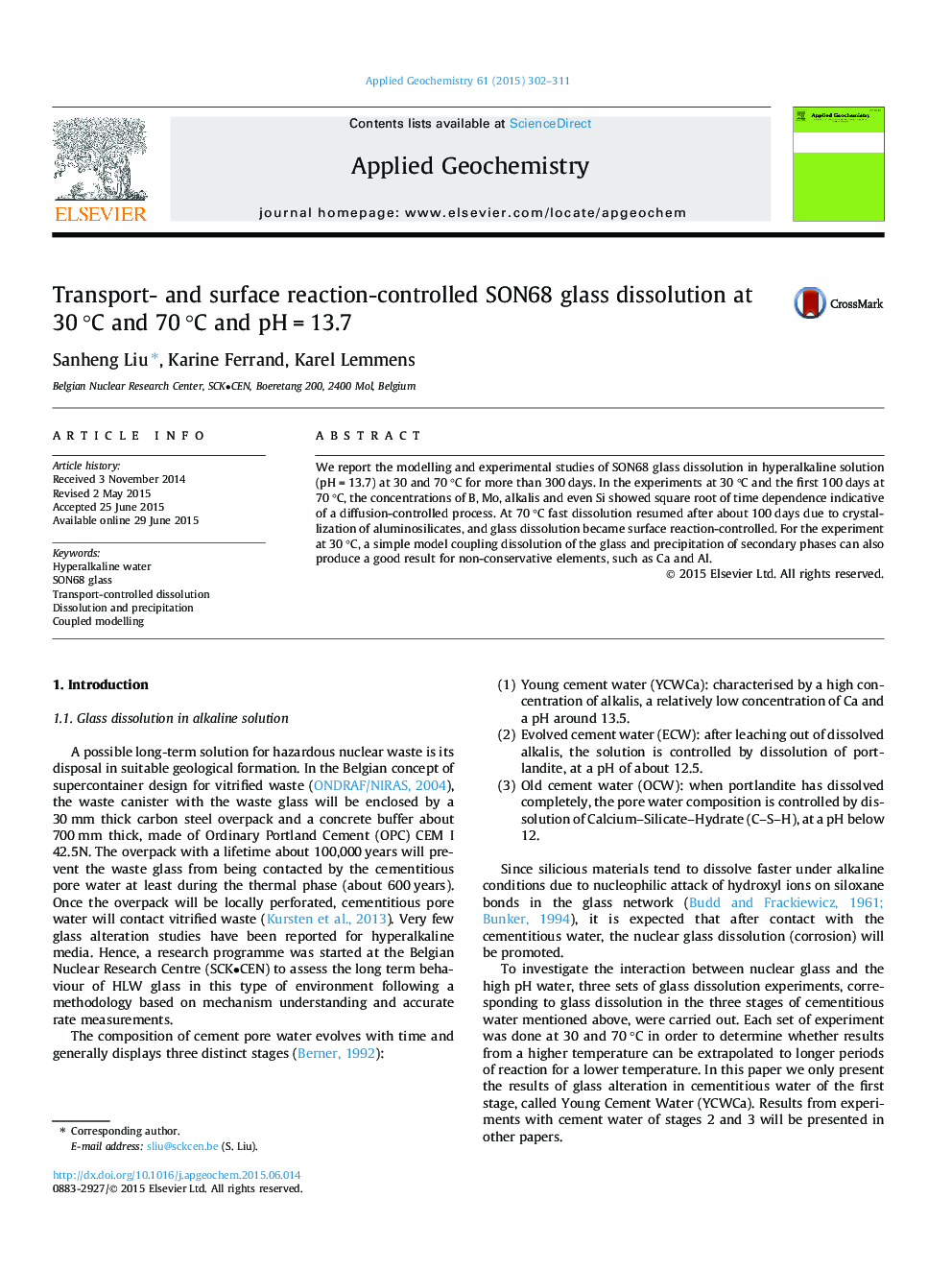| Article ID | Journal | Published Year | Pages | File Type |
|---|---|---|---|---|
| 6335054 | Applied Geochemistry | 2015 | 10 Pages |
Abstract
We report the modelling and experimental studies of SON68 glass dissolution in hyperalkaline solution (pH = 13.7) at 30 and 70 °C for more than 300 days. In the experiments at 30 °C and the first 100 days at 70 °C, the concentrations of B, Mo, alkalis and even Si showed square root of time dependence indicative of a diffusion-controlled process. At 70 °C fast dissolution resumed after about 100 days due to crystallization of aluminosilicates, and glass dissolution became surface reaction-controlled. For the experiment at 30 °C, a simple model coupling dissolution of the glass and precipitation of secondary phases can also produce a good result for non-conservative elements, such as Ca and Al.
Related Topics
Physical Sciences and Engineering
Earth and Planetary Sciences
Geochemistry and Petrology
Authors
Sanheng Liu, Karine Ferrand, Karel Lemmens,
